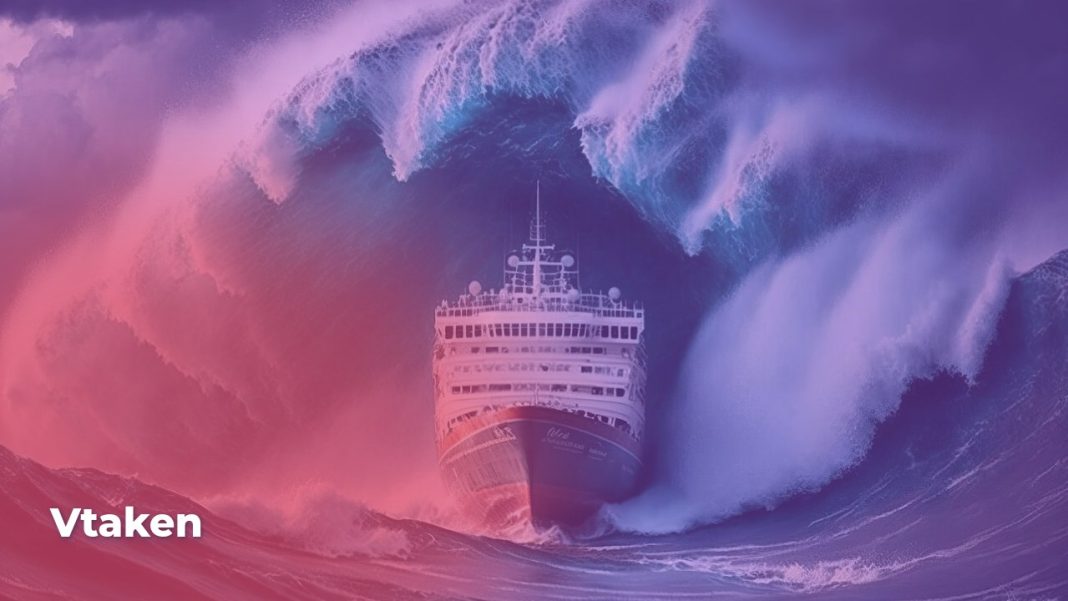Imagine navigating through waters where the very sea seems to conspire against your journey. Stark waves tower like giants, unpredictable storms rage without warning, and beneath the surface lie treacherous currents ready to pull even the sturdiest vessels into chaos. Welcome to the world’s most dangerous seas, where every voyage is a test of endurance and every horizon hides potential peril. From the mysterious Bermuda Triangle to the ferocious Drake Passage, these maritime regions challenge sailors and captains alike, embodying nature’s raw power and the relentless unpredictability of the ocean. Let’s embark on a journey to uncover the secrets and dangers that make these seas some of the most feared and formidable on our planet.
Most dangerous sea: definitions and criteria
When we talk about the most dangerous sea, what exactly defines such perilous waters? It’s not merely about the vastness or the depth of the ocean but a combination of several critical factors that make navigation hazardous. Dangerous seas are typically characterized by extreme weather conditions, high wave activity, strong and unpredictable currents, and complex underwater topographies that can deceive even the most experienced sailors.
To better understand what constitutes a dangerous sea, let’s break down the key criteria:
- Severe Weather Conditions: Frequent and intense storms can arise with little warning, making the sea conditions highly volatile.
- High Wave Activity: Massive waves, sometimes reaching heights of 30 meters, can capsize ships or damage vessel integrity.
- Strong Currents: Powerful currents can alter the course of ships, making navigation difficult and increasing the risk of accidents.
- Treacherous Underwater Topography: Hidden reefs, sudden drops, and uncharted underwater landscapes pose significant risks to maritime navigation.
These factors often interplay, creating environments that are not only challenging but also unpredictable. Comparing different seas, one might find variations in how these elements manifest. For instance, the Bermuda Triangle is notorious for its mysterious disappearances, often attributed to unpredictable weather and navigational errors, while the Drake Passage is infamous for its relentless waves and strong currents stemming from the meeting of the Atlantic and Pacific Oceans.
Understanding these criteria helps in assessing which seas stand out as the most dangerous. It’s a blend of natural elements and, in some cases, human-induced factors like high traffic and piracy, all contributing to the treacherous nature of these maritime zones.
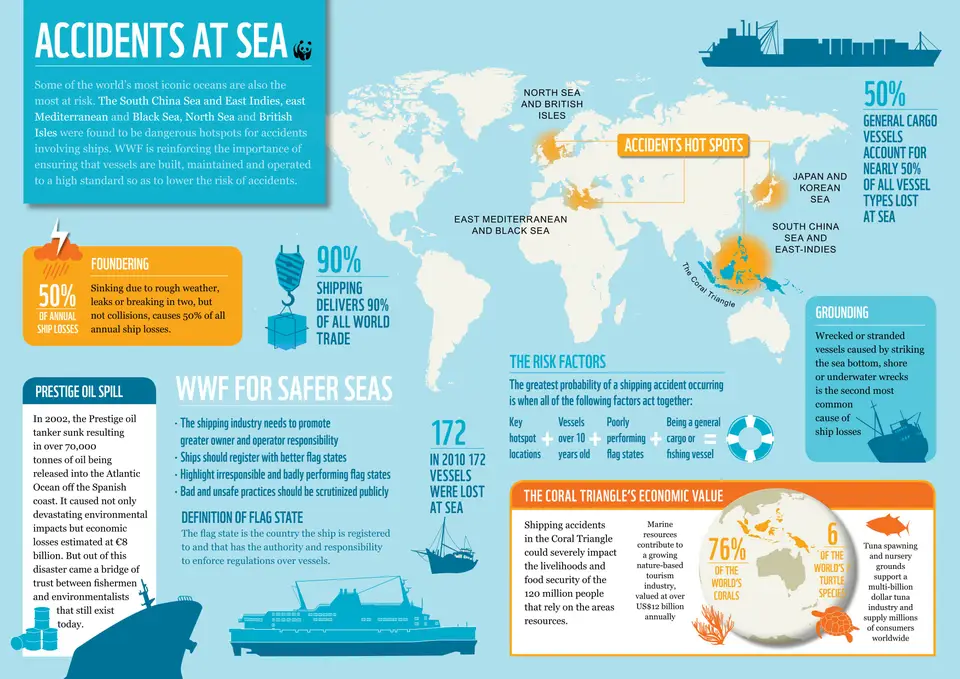
Characteristics of dangerous seas
Diving deeper into the essence of what makes certain seas exceptionally dangerous, we uncover a tapestry woven with natural ferocity and human challenges. Dangerous seas are not defined by a single trait but by a multitude of characteristics that collectively create a formidable maritime environment.
One of the foremost characteristics is volatile weather patterns. Seas like the North Sea and Bay of Biscay are infamous for their wild storms and dense fogs, particularly during winter months. These conditions drastically reduce visibility and make navigation perilous, increasing the likelihood of shipwrecks and maritime accidents.
Another critical factor is extreme wave activity. In regions such as the Drake Passage, waves can surge to heights of 30 meters (approximately 98 feet), creating a hostile environment for even the most robust vessels. These towering waves, coupled with strong and unpredictable currents, can destabilize ships, leading to capsizing or severe structural damage.
Underwater hazards also play a significant role in escalating sea danger levels. The Java Sea, for instance, is riddled with shallow waters, uncharted reefs, and heavy shipping traffic. These underwater obstacles are often concealed beneath the water’s surface, posing unsuspected threats to maritime navigation and increasing the chances of groundings and collisions.
Moreover, high maritime traffic contributes to the danger by elevating the risk of human-induced accidents. Busy shipping lanes, such as those in the South China Sea, are hotspots for collisions and other navigational mishaps. The dense traffic, combined with challenging environmental conditions, makes these seas particularly treacherous.
To summarize, the characteristics that define dangerous seas include:
- Volatile Weather Patterns: Frequent storms and poor visibility.
- Extreme Wave Activity: Massive waves capable of toppling vessels.
- Strong and Unpredictable Currents: Difficulties in navigation and vessel control.
- Underwater Hazards: Hidden reefs and shallow waters.
- High Maritime Traffic: Increased risk of collisions and accidents.
These elements, individually and in combination, create maritime zones where survival requires exceptional skill, preparedness, and sometimes a bit of luck.
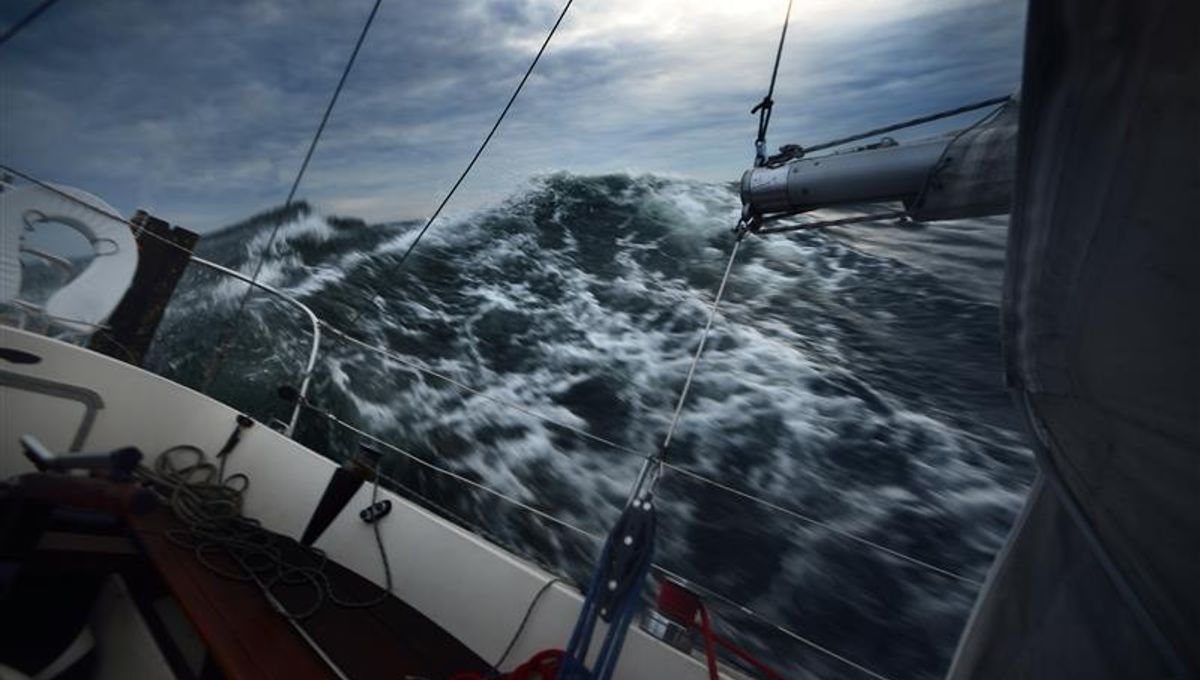
Top 5 most dangerous seas in the world
When we rank the most dangerous seas in the world, several notorious maritime regions emerge, each with its unique set of hazards that challenge even the most seasoned sailors. Here’s a closer look at the top five:
-
Drake Passage
- Location: Between South America’s Cape Horn and Antarctica.
- Hazards: Extreme weather, 30-meter waves, strong currents.
- Notability: Connects the Atlantic and Pacific Oceans, known for treacherous crossings and icy waters.
-
Bermuda Triangle
- Location: North Atlantic Ocean, between Miami, Bermuda, and Puerto Rico.
- Hazards: Sudden weather changes, rogue waves, heavy maritime traffic.
- Notability: Infamous for mysterious disappearances of ships and aircraft.
-
South China Sea
- Location: Southeast Asia, bordered by China, Vietnam, the Philippines, and other nations.
- Hazards: High traffic congestion, pirate activity, territorial disputes.
- Notability: Essential for global trade routes, exacerbated by geopolitical tensions.
-
Java Sea
- Location: Indonesia, surrounded by the islands of Java, Borneo, Sumatra, and Sulawesi.
- Hazards: Shallow waters, uncharted reefs, heavy shipping traffic.
- Notability: High incidence of maritime accidents due to navigational challenges.
-
Red Sea
- Location: Between Africa and the Arabian Peninsula.
- Hazards: Geopolitical conflicts, piracy, strong currents.
- Notability: Key shipping route for global trade, recently heightened risks due to regional conflicts.
Each of these seas presents a unique combination of natural and human-induced dangers, making them stand out as some of the most perilous maritime environments on Earth. Whether it’s the relentless storms of the Drake Passage or the enigmatic disappearances in the Bermuda Triangle, these seas demand respect and caution from all who venture into their waters.
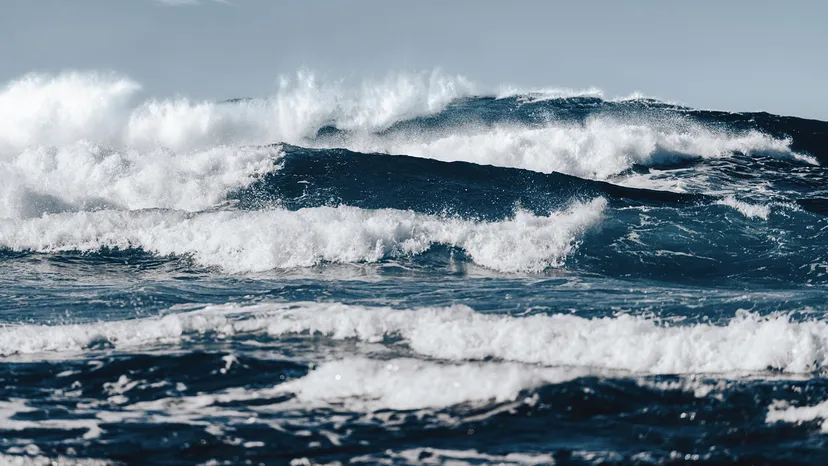
Comparative analysis of the Drake Passage and Bermuda Triangle
When comparing the Drake Passage and the Bermuda Triangle, we encounter two of the most infamous and dangerous maritime regions, each with its distinct characteristics and challenges. Let’s delve into a comparative analysis to understand why these seas are regarded as some of the most perilous in the world.
Drake Passage vs. Bermuda Triangle
| Feature | Drake Passage | Bermuda Triangle |
|---|---|---|
| **Location** | Between Cape Horn (South America) and Antarctica | North Atlantic Ocean, between Miami, Bermuda, Puerto Rico |
| **Primary Hazards** | Extreme weather, massive waves (up to 30m), strong currents | Unpredictable weather, rogue waves, high traffic |
| **Notable Incidents** | Numerous shipwrecks due to severe storms | Mysterious disappearances of ships and aircraft |
| **Environmental Conditions** | Cold waters, presence of icebergs | Warm waters, rapid weather changes |
| **Navigational Challenges** | Turbulent waters from meeting Atlantic & Pacific currents | High maritime traffic, potential for human error |
Weather Conditions: The Drake Passage is renowned for its relentless weather patterns. Located between South America and Antarctica, it serves as the confluence point for the Atlantic and Pacific Oceans, resulting in turbulent waters. Storms here are not just frequent but can produce waves over 30 feet, making navigation extremely hazardous. In contrast, the Bermuda Triangle experiences sudden and often unpredictable weather changes, including waterspouts and rogue waves. While the Triangle’s storms can be intense, they are generally less consistently severe compared to the Drake Passage’s relentless turbulence.
Navigational Hazards: Navigating the Drake Passage is a formidable challenge due to its cold waters and the presence of icebergs, which add a layer of complexity and danger. Ships traversing this route must contend with both natural and environmental perils, often requiring expert handling and robust vessel construction. On the other hand, the Bermuda Triangle’s hazards are compounded by its status as one of the busiest maritime corridors in the world. The heavy traffic increases the likelihood of collisions and accidents, and the region’s underwater topography can be deceptive, hiding reefs and shallow areas that are treacherous for navigation.
Incidents and Lore: The Bermuda Triangle is shrouded in mystery, with countless tales of ships and aircraft vanishing without explanation. While many of these incidents can be attributed to environmental factors and navigational errors, the lore surrounding the Triangle has fueled speculation and intrigue. Conversely, the Drake Passage is infamous primarily for its environmental hazards rather than mysterious disappearances. The Passage has been the site of numerous shipwrecks and rescues, highlighting the sea’s inherent dangers without the added layer of myth.
Overall Peril: While both the Drake Passage and the Bermuda Triangle are extraordinarily dangerous, the Drake Passage is generally considered more perilous in terms of environmental severity. Its consistent and extreme weather conditions present a direct and ongoing threat to navigation, making it a relic of maritime challenge. The Bermuda Triangle, though exceptionally dangerous, often relies more on its dense traffic and unpredictable weather, alongside the mysteries that surround it, to earn its notorious reputation.
In conclusion, both seas are bastions of maritime danger, but their threats manifest differently one through relentless natural fury, the other through a combination of environmental challenges and human factors.
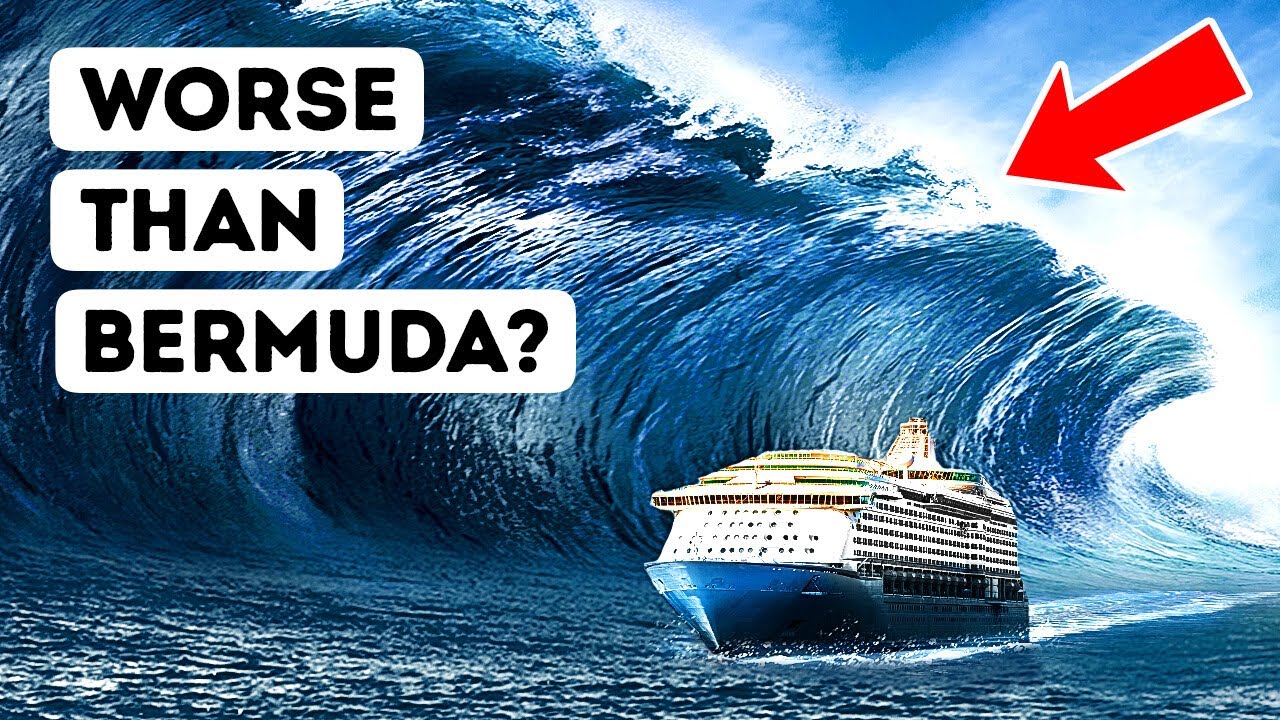
Impact of weather conditions on sea danger levels
Weather is a formidable force that shapes the very fabric of our oceans, turning serene waters into chaotic maelstroms within moments. The impact of weather conditions on the danger levels of seas cannot be overstated, as it directly influences visibility, wave activity, and navigational safety. Let’s explore how various weather phenomena elevate the peril of certain maritime regions.
Severe Storms and Hurricanes
Severe storms and hurricanes are among the most significant contributors to dangerous sea conditions. In regions like the North Sea, wild storms can unleash relentless winds and towering waves, particularly during the winter months. These storms not only reduce visibility but also create treacherous seas that challenge the structural integrity of ships. Similarly, the Bay of Biscay experiences unpredictable weather, where calm conditions can swiftly escalate into violent storms, compounding the dangers for maritime navigation.
Rogue Waves and Waterspouts
Rogue waves, those unexpected and colossal waves that can dwarf even the largest ships, are another perilous weather-related phenomenon. These waves can appear without warning, battering vessels and causing catastrophic damage. The Bermuda Triangle, for example, is prone to rogue waves that can capsize ships seemingly out of nowhere. Additionally, waterspouts columns of rotating air and water pose a unique threat by combining intense winds with churning sea surface conditions, further complicating navigation.
Strong Currents and Tidal Forces
Strong currents and tidal forces can drastically alter sea conditions, making certain regions more dangerous. The Drake Passage, where the Atlantic and Pacific Oceans meet, is characterized by powerful currents that create turbulent waters. Navigating through such currents demands exceptional skill and precise maneuvering to avoid being swept off course or into dangerous areas. These strong currents can also interfere with the stability of vessels, increasing the risk of accidents.
Fog and Reduced Visibility
Fog is another weather condition that significantly heightens sea danger levels. In areas like the North Sea, dense fog can obscure landmarks and navigational aids, leading to disorientation and heightened collision risks. Reduced visibility forces ships to rely heavily on onboard instruments and radar, but even then, the margin for error becomes perilously thin, especially in busy shipping lanes where multiple vessels operate in close proximity.
Comparative Weather Impacts
| Weather Condition | North Sea | Bay of Biscay | Bermuda Triangle | Drake Passage |
|---|---|---|---|---|
| **Storms** | Wild, frequent storms | Unpredictable violent storms | Sudden intense storms | Relentless and extreme storms |
| **Waves** | High waves during storms | Massive waves in storms | Rogue waves | Massive 30-foot waves |
| **Visibility** | Dense fogs | Variable visibility | Variable, sudden changes | Limited by storm conditions |
| **Currents** | Moderate to strong currents | Strong, unpredictable currents | Heavy traffic influence | Extremely strong currents |
| **Special Hazards** | Fog and high winds | Rogue waves | Waterspouts and rogue waves | Icebergs and cold waters |
Weather conditions like these are critical in determining the danger levels of seas. They not only affect the immediate safety of vessels but also influence long-term maritime safety standards and operational protocols. Understanding and predicting these weather patterns are essential for mitigating risks and ensuring safer navigation through some of the world’s most hazardous maritime regions.
Historical shipwrecks in the most dangerous seas
The annals of maritime history are marked by countless shipwrecks, each telling a tale of treacherous seas and human resilience. In the world’s most dangerous seas, such as the North Sea and the Drake Passage, the combination of severe weather, high wave activity, and navigational hazards has led to numerous tragic incidents over the centuries. Let’s delve into some of the most significant shipwrecks that underscore the peril of these maritime environments.
The RMS Titanic in the North Atlantic
While not located directly within the North Sea, the infamous sinking of the RMS Titanic in the North Atlantic Ocean serves as a poignant reminder of the dangers posed by high waves and icebergs. On its maiden voyage in 1912, the Titanic struck an iceberg, leading to the loss of over 1,500 lives. This disaster highlighted the critical need for improved navigational aids and ice patrols, influencing maritime safety regulations worldwide.
The HMS Erebus and HMS Terror in the Drake Passage
In the frigid waters of the Drake Passage, two British warships, HMS Erebus and HMS Terror, met their demise during the ill-fated Franklin Expedition of 1845. Missioned to navigate the passage and chart a northwest passage through the Arctic, both ships were lost, and their crews perished. The extreme weather conditions, massive waves, and icy waters of the Drake Passage played a significant role in the ships’ demise, illustrating the unforgiving nature of these seas.
The MV Derbyshire in the Pacific and Its Comparable Regions
Although the MV Derbyshire sank in the South China Sea rather than the Pacific, the high traffic and severe weather conditions characteristic of this region contributed to the vessel’s loss in 1980. As the largest British ship ever lost at sea, the Derbyshire’s disappearance emphasized the dangers associated with heavily trafficked and environmentally volatile seas, prompting investigations into ship design and weather forecasting improvements.
The USS Indianapolis in the Indian Ocean
The sinking of the USS Indianapolis after World War II in the Indian Ocean underscores the peril of navigation in busy maritime routes compounded by wartime conditions. Stricken by a Japanese submarine, the ship sank in shallow waters, leading to significant loss of life. The incident highlights how human conflicts and high traffic areas can exacerbate the dangers of already treacherous seas.
Modern Incidents in the South China Sea
In recent years, the South China Sea has witnessed numerous shipwrecks and accidents, often attributed to its complex mix of severe weather, high traffic congestion, and navigational challenges. The region’s strategic importance for global trade, coupled with geopolitical tensions, further magnifies the risks, resulting in frequent maritime incidents that underline the sea’s dangerous reputation.
Comparative Shipwreck Analysis
| Shipwreck | Sea Region | Year | Primary Cause | Notable Factors |
|---|---|---|---|---|
| RMS Titanic | North Atlantic | 1912 | Iceberg collision | Lack of sufficient lifeboats; high traffic |
| HMS Erebus & Terror | Drake Passage | 1845 | Extreme weather, icebergs | Exploratory mission; harsh environmental conditions |
| MV Derbyshire | South China Sea | 1980 | Severe weather, structural failure | High traffic; poor weather forecasting |
| USS Indianapolis | Indian Ocean | 1945 | Submarine attack, poor weather | Wartime conditions; high traffic |
| Modern South China Sea Incidents | South China Sea | Various | Severe weather, high traffic, geopolitical tensions | Complex navigational challenges; piracy risks |
These shipwrecks serve as sobering reminders of the inherent dangers in the world’s most perilous seas. They have not only shaped maritime safety protocols but also cemented the reputation of these seas as some of the most dangerous passages for navigation.
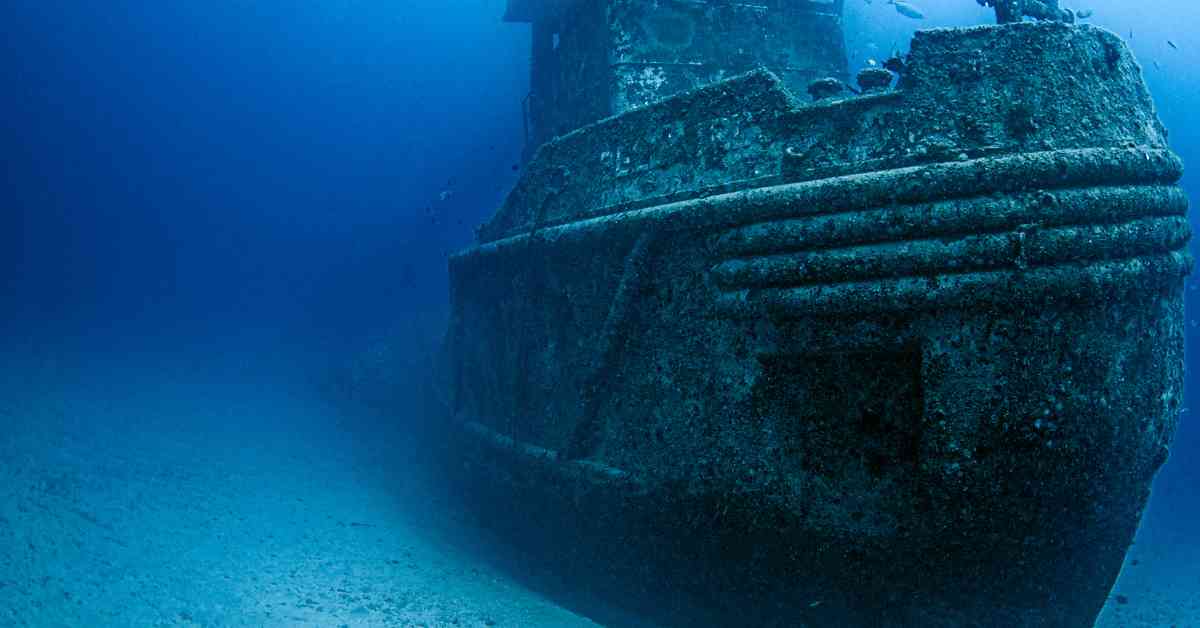
Current maritime risks in dangerous waterways
Today’s maritime landscape is fraught with a myriad of risks that compound the inherent dangers of the world’s most perilous seas. From geopolitical tensions to evolving piracy tactics, the current maritime environment presents navigators with unprecedented challenges. Let’s explore the contemporary risks that threaten navigation safety in these dangerous waterways.
Geopolitical Tensions and Naval Conflicts
Regions like the Red Sea and the Black Sea are hotbeds of geopolitical tensions and naval conflicts that escalate maritime risks. The Red Sea, for example, has seen increased attacks on commercial vessels by the Iranian-backed Houthi movement, targeting ships associated with Israeli shipping. These aggressive actions include drone and missile strikes, forcing major shipping companies to reroute around the Cape of Good Hope. This not only increases transit times and operational costs but also exposes vessels to additional maritime hazards.
In the Black Sea, ongoing conflicts between Russia and Ukraine have disrupted shipping routes due to the presence of naval mines and military operations. These naval threats pose significant risks to commercial shipping, as mines can remain hidden and deadly, and military engagements can erupt unexpectedly, endangering civilian vessels.
Piracy and Maritime Security
Piracy remains a critical threat in various dangerous seas, including the Gulf of Aden, the waters off Somalia, and the Gulf of Guinea. These regions experience high rates of piracy fueled by economic desperation and declining fish stocks caused by climate change and illegal fishing practices. Pirates in these areas employ increasingly sophisticated tactics, such as using speedboats and armed drones, making them more difficult to deter and defend against.
High Traffic Congestion and Navigational Challenges
The South China Sea is notorious for its high traffic congestion, which, combined with territorial disputes, creates a complex and risky navigational environment. The militarization of shipping lanes and frequent encounters between military and commercial vessels heightens the risk of accidents and collisions. Additionally, the presence of unauthorized and unregistered vessels, often operating under flags of convenience, complicates insurance and regulatory compliance, further increasing maritime risks.
Technological and Environmental Factors
Advancements in technology have both mitigated and introduced new risks. While better navigation systems and weather forecasting have improved safety, the reliance on technology also introduces vulnerabilities. Cybersecurity threats targeting navigation and communication systems can disrupt shipping operations, leading to accidents or delays.
Environmental factors, such as lingering effects of climate change, continue to pose significant risks. Rising sea levels and increasing sea temperatures affect marine ecosystems and weather patterns, making maritime navigation more unpredictable and dangerous. These changes can also lead to more frequent and intense storms, further complicating navigation and increasing the likelihood of maritime incidents.
Comparative Maritime Risks
| Risk Factor | Red Sea | Black Sea | South China Sea | Gulf of Aden | Gulf of Guinea |
|---|---|---|---|---|---|
| **Geopolitical Tensions** | Houthi attacks, missile strikes | Russia-Ukraine conflicts | Territorial disputes, militarization | Piracy linked to regional conflicts | Piracy, maritime disputes |
| **Piracy** | Moderate | Low | Low | High | High |
| **Traffic Congestion** | High | Moderate | Extremely high | Moderate | High |
| **Navigational Challenges** | Aggressive attacks, rerouting | Naval mines, military operations | Militarization, unauthorized ships | Naval threats, piracy | High traffic, piracy |
| **Technological Threats** | Drone and missile attacks | Limited cybersecurity threats | Cybersecurity vulnerabilities | Emerging threats from technology | Increasing cyber threats |
As we navigate through these contemporary risks, it becomes evident that the dangers in these seas are multifaceted, requiring comprehensive strategies that encompass geopolitical diplomacy, enhanced maritime security, and robust environmental policies. Addressing these challenges is crucial for safeguarding navigation and ensuring the safety of maritime operations across the globe.
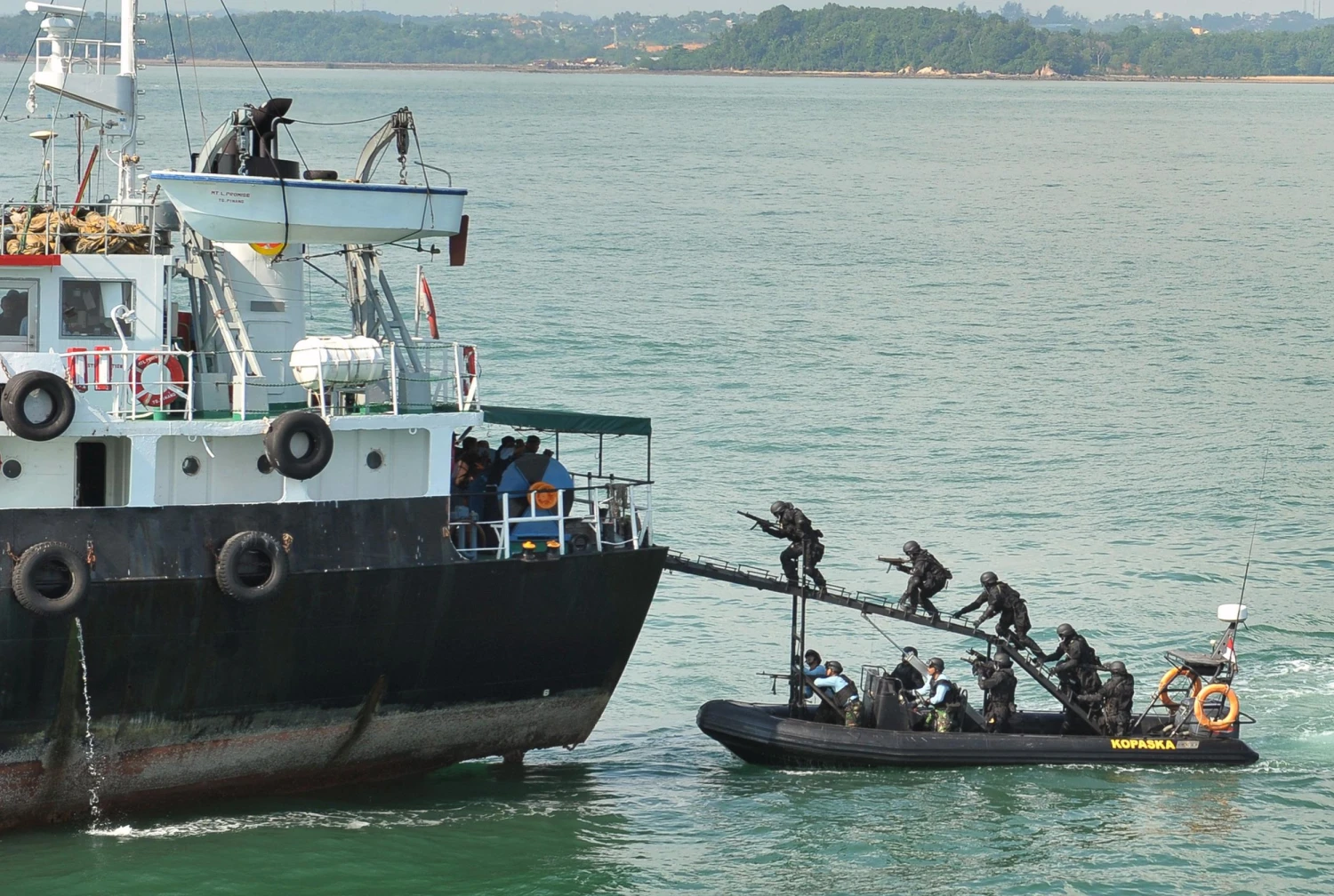
Regional conflicts affecting sea safety
Regional conflicts dramatically alter the safety landscape of maritime navigation, turning once-travel-safe waterways into zones of high peril. These conflicts often lead to the proliferation of naval mines, increases in piracy, and disruptions in shipping routes, all of which contribute to making certain seas among the most dangerous in the world. Let’s examine how specific regional conflicts are influencing sea safety.
The Red Sea and the Houthi Movement
The Red Sea has become increasingly hazardous due to the ongoing conflict involving the Iranian-backed Houthi movement in Yemen. Since late 2023, the Houthis have escalated their attacks on commercial vessels, particularly targeting those with connections to Israeli shipping. Utilizing drones and missiles, these attacks not only threaten the safety of ships but also disrupt one of the world’s critical maritime corridors. As a result, major shipping companies are forced to reroute their vessels around the Cape of Good Hope, significantly increasing transit times, fuel consumption, and operational costs.
The Black Sea Amidst Russia-Ukraine Conflict
The Black Sea remains a focal point of maritime danger due to the persistent conflict between Russia and Ukraine. Naval mines and military operations have made the region treacherous for commercial shipping. The deployment of unmanned vessels and frequent naval confrontations exacerbate the risks, making navigation uncertain and dangerous. The Black Sea is a vital corridor for grain exports and other goods, and disruptions here have far-reaching impacts on global trade and food security.
South China Sea Territorial Disputes
The South China Sea is a hotspot of regional tensions, driven by territorial disputes involving China and its neighbors such as Vietnam, the Philippines, and Malaysia. The rising militarization of the area, with increased deployments of military vessels and infrastructures like artificial islands, heightens the risks for commercial shipping. Encounters between military and civilian vessels are becoming more frequent, increasing the potential for accidents and escalating conflicts that can detrimentally impact sea safety.
The Gulf of Aden and Somali Piracy
The Gulf of Aden continues to be one of the most risky maritime regions globally, primarily due to Somali piracy. Despite international naval patrols and anti-piracy measures, incidents of hijacking and ransom demands persist, driven by economic desperation and dwindling fish stocks in the region. Pirates have become more sophisticated, using speedboats and armed teams that attack commercial vessels swiftly, leaving minimal time for escape or defense.
Comparative Impact of Regional Conflicts
| Region | Primary Conflict | Key Maritime Risks | Impact on Sea Safety |
|---|---|---|---|
| **Red Sea** | Yemen Conflict (Houthi attacks) | Drone and missile strikes on ships | Increased shipping costs, rerouting |
| **Black Sea** | Russia-Ukraine Conflict | Naval mines, military operations | Disrupted trade, high accident risk |
| **South China Sea** | Territorial Disputes | Militarization, vessel confrontations | Heightened collision risks, trade disruptions |
| **Gulf of Aden** | Somali Piracy | Hijackings, ransom demands | Threatened vessel safety, insurance spikes |
| **Gulf of Guinea** | West African Maritime Conflicts | Piracy, kidnappings | Increased insurance costs, navigation hazards |
These regional conflicts not only make these seas among the most dangerous globally but also have significant implications for international trade, maritime insurance, and global economic stability. Addressing these conflicts and implementing comprehensive maritime security measures is essential for enhancing sea safety and ensuring smooth navigation across these critical waterways.
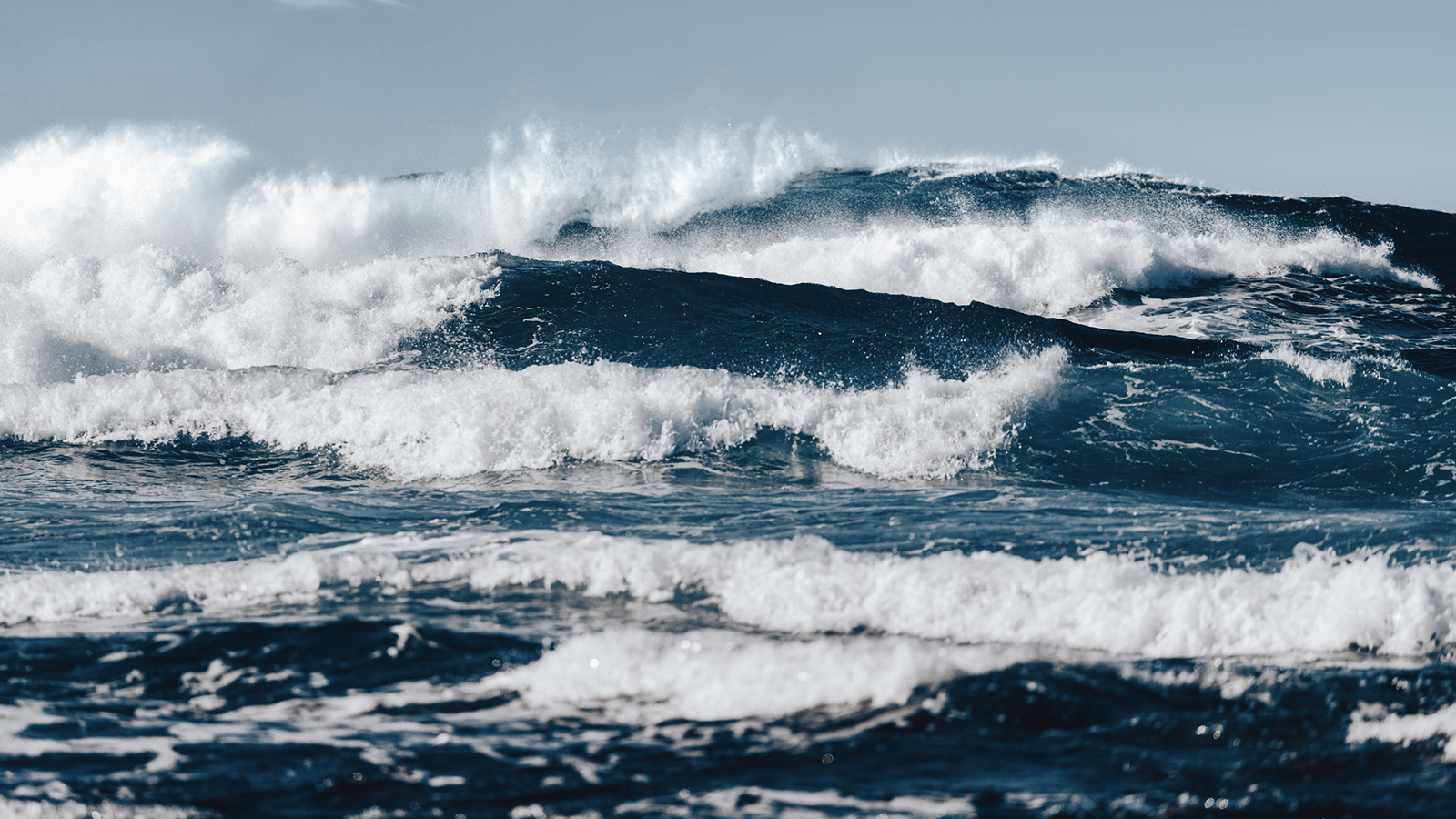
Role of piracy in increasing sea danger
Piracy remains a relentless threat that significantly elevates the dangers associated with sea navigation, especially in regions critical for global trade. The resurgence and evolution of piracy tactics in areas like the Gulf of Aden, the waters off Somalia, and the Gulf of Guinea have transformed these seas into perilous zones for maritime activity. Let’s explore how piracy exacerbates sea dangers and its broader implications on global shipping.
High-Risk Piracy Regions
-
Gulf of Aden and Somali Waters:
- Piracy Rate: Historically high, though reduced slightly due to international naval patrols.
- Pirate Tactics: Use of fast attack boats, armed with automatic weapons; hostage-taking and ransom demands.
- Impact: Airlines and shipping companies face increased insurance premiums and rerouting costs to avoid these areas.
-
Gulf of Guinea:
- Piracy Rate: On the rise, now considered one of the most dangerous piracy hotspots.
- Pirate Tactics: Kidnappings for ransom, hijackings, and illegal oil theft.
- Impact: Shipping companies face significant delays and increased costs due to heightened security measures.
-
Southeast Asian Waters:
- Piracy Rate: Moderate, with sporadic attacks.
- Pirate Tactics: Opportunistic boarding, often targeting small to medium-sized vessels.
- Impact: Increased vigilance and the need for armed security on ships.
Factors Contributing to Piracy
- Economic Desperation: Declining fish stocks, exacerbated by climate change, reduce livelihoods for small-scale fishers, pushing some towards piracy as an alternative.
- Political Instability: Weak governance and corruption in coastal regions create environments where piracy can thrive.
- High Sea Traffic: Regions with heavy shipping traffic present more opportunities for pirates to target vessels.
- Technological Advancements: Pirates utilize advanced navigation and communication tools to locate and approach targets more effectively.
Comparative Piracy Analysis
| Region | Piracy Incidents | Primary Tactics | Economic Impact | Security Measures |
|---|---|---|---|---|
| **Gulf of Aden** | High, though declining | Armed boardings, hostage-taking | Increased shipping costs, insurance premiums | International naval patrols, armed guards on ships |
| **Gulf of Guinea** | Rising | Kidnappings, hijackings | Significant delays, higher insurance costs | Enhanced maritime security, legal reforms |
| **Southeast Asia** | Moderate | Opportunistic boardings | Need for vigilant security, rerouting costs | Onboard security personnel, naval presence |
| **West Africa** | High in certain areas | Illegal fishing, ransom demands | Disrupted trade routes, economic losses | Regional security cooperation, anti-piracy operations |
Mitigating Piracy Risks
Addressing piracy requires a multifaceted approach that combines international cooperation, economic development, and strengthening maritime security:
- International Naval Patrols: Collaborative efforts by nations to patrol high-risk areas can deter pirate activities and provide rapid response to incidents.
- Economic Support for Coastal Communities: Providing alternative livelihoods can reduce the incentive for individuals to engage in piracy.
- Advanced Ship Security Measures: Implementing technologies such as long-range acoustic devices (LRADs), secure citadels, and onboard armed security can protect vessels from pirate attacks.
- Legal and Judicial Reforms: Strengthening the legal frameworks in piracy-prone regions ensures that captured pirates are prosecuted and deter future acts.
Conclusion
Piracy remains a significant factor in increasing sea danger, especially in key maritime regions vital for global trade. By understanding the dynamics of piracy and implementing comprehensive security measures, the maritime community can work towards mitigating these risks and ensuring safer navigation across the world’s most dangerous seas.

Effects of climate change on sea navigation risks
Climate change is wielding a profound impact on marine environments, reshaping sea navigation risks in ways that compound the dangers of already perilous waters. The effects of climate change extend beyond rising sea levels, influencing weather patterns, ocean currents, and marine ecosystems, all of which contribute to heightened maritime hazards. Let’s explore how climate change exacerbates sea navigation risks and alters the dynamics of dangerous seas.
Rising Sea Temperatures and Weather Extremes
One of the most immediate effects of climate change is the increase in sea surface temperatures, which significantly affects weather patterns. Warmer oceans fuel more intense and frequent storms, hurricanes, and typhoons, particularly in regions like the North Sea and the South China Sea. These extreme weather events can lead to unforgiving sea conditions, with higher winds and larger waves that challenge vessel stability and navigation.
Sea Level Rise and Coastal Erosion
Rising sea levels, driven by the melting of polar ice caps and thermal expansion of seawater, are leading to increased coastal erosion and the alteration of sea landscapes. In regions with shallow waters and intricate coastlines, such as the Java Sea, rising levels can unmask previously hidden underwater hazards like reefs and sandbanks, making navigation more treacherous. Additionally, higher sea levels can lead to more frequent and severe coastal flooding, impacting port operations and shipping infrastructure.
Ocean Acidification and Marine Ecosystem Disruption
Ocean acidification, resulting from increased CO2 absorption, disrupts marine ecosystems by affecting coral reefs and marine life. Healthy coral reefs act as natural barriers that protect coastlines and stabilize sea beds, but their degradation leaves ships more vulnerable to navigational hazards like sudden currents and underwater topography changes. Disrupted ecosystems also influence fish populations, which can indirectly impact maritime security and increase the likelihood of piracy as fishers turn to alternative livelihoods.
Increased Frequency of Rogue Waves
Climate change contributes to the increased frequency and intensity of rogue waves unexpected, massive waves that can inundate even the most robust ships. These waves pose a significant threat in all dangerous seas, from the Bermuda Triangle to the Drake Passage, making them even more perilous for navigation. The unpredictability and sheer force of rogue waves can lead to sudden and catastrophic vessel damage.
Altered Ocean Currents
Changes in global ocean currents, driven by shifting wind patterns and melting ice, can lead to the formation of new currents or the alteration of existing ones. This can make previously predictable sea routes unpredictable and more dangerous. In the Drake Passage, altered currents might exacerbate the already fierce and chaotic conditions, further challenging navigation efforts and increasing the risk of maritime accidents.
Climate-Driven Geopolitical Tensions
The shifting environmental landscape can also fuel geopolitical tensions, particularly over scarce maritime resources like fishing grounds and navigable routes. Disputes over territories and access to resources in areas like the South China Sea can escalate, leading to increased militarization and heightened risks for commercial shipping. These tensions compound the navigational risks, as geopolitical conflicts add layers of complexity and danger to already treacherous seas.
Comparative Climate Impact Analysis
| Climate Change Effect | Impact on Sea Navigation | Affected Regions | Increased Risks |
|---|---|---|---|
| **Rising Temperatures** | More intense storms and hurricanes | North Sea, South China Sea | Unpredictable weather, high waves |
| **Sea Level Rise** | Coastal erosion, unmasking hazards | Java Sea, shallow coastal regions | Difficult navigation, port disruptions |
| **Ocean Acidification** | Disrupted marine ecosystems | Global, especially coral-rich areas | Increased piracy, navigational hazards |
| **Rogue Waves** | Higher frequency, larger size | Bermuda Triangle, Drake Passage | Sudden vessel damage, capsizing risks |
| **Altered Currents** | Changes in navigational routes | Drake Passage, Atlantic-Pacifique | Unpredictable sea conditions |
| **Geopolitical Tensions** | Resource disputes, militarization | South China Sea, Gulf of Aden | Navigational conflicts, increased piracy |
Mitigation and Adaptation Strategies
To address the escalating navigation risks posed by climate change, the maritime industry and governments must adopt comprehensive strategies:
- Enhanced Weather Forecasting: Investing in advanced meteorological systems to better predict and prepare for extreme weather events.
- Infrastructure Resilience: Strengthening port facilities and shipping infrastructure to withstand rising sea levels and severe storms.
- Ecosystem Protection: Preserving and restoring marine ecosystems like coral reefs to maintain natural barriers against harsh sea conditions.
- Adaptive Navigation Technologies: Developing and implementing technologies that can quickly adapt to changing sea currents and conditions.
- International Cooperation: Collaborating on a global scale to address the multifaceted challenges posed by climate change, ensuring safe and sustainable maritime operations.
Conclusion
Climate change is an inexorable force reshaping the maritime landscape, amplifying existing dangers, and introducing new risks to sea navigation. By understanding and mitigating these effects, we can work towards safer and more resilient maritime operations, even in the world’s most dangerous seas.

